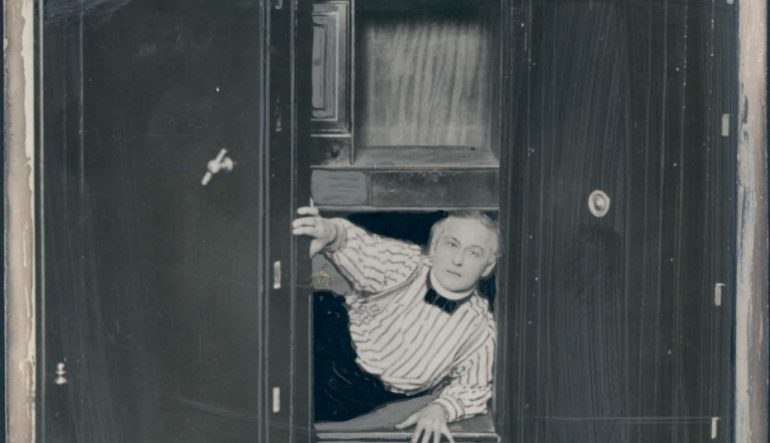In most cases of out-of-hospital cardiac arrest, AEDs aren’t used. Why?
AED stands for Automated External Defibrillator. By placing the pads of an AED on the bare chest of someone who has collapsed, is unconscious and is not breathing normally, the device detects if that person is experiencing a sudden cardiac arrest.
If so, it applies an electric shock to restart a heart’s normal rhythmic beating. This in turn, resumes the circulation of oxygenated blood to the brain and organs.
Despite the evidence that AEDs are critical to survival of out-of-hospital cardiac arrest (OHCA), most patients are not defibrillated in time.
In fact, this study published in the European Heart Journal estimates public access defibrillation (PAD) is only used in 0.15 to 4.3 per cent of out-of-hospital cardiac arrests.
This is a major cause for the fact out-of-hospital cardiac arrest survival rates around the world are estimated to be as low as below one per cent.
If AEDs save lives, what stops them from being used?
We don’t know what AEDs are
The European Heart Journal-published study referred to above also talks about AED awareness – and specifically, the lack of it.
In surveys conducted by the authors, between 15 and 89 per cent of populations knew what an AED was and how to use one.
That’s a huge disparity; for those communities with low awareness, there’s little to no chance an AED would be used in an emergency.
We don’t know where the nearest AED is
A common problem with AED deployment is availability. Despite the fact that public access to AEDs is growing all the time, their usage rates remains very low – often because (for example) community first responders don’t know where they are, or can’t access them.
That said, we’ve also talked previously about the high percentage of out-of-hospital cardiac arrests that occur near an AED that isn’t used. So public access defibrillation (PAD) access is only part of the problem.
There is also the issue that PAD networks don’t extend to our homes – where more than 80 per cent of out-of-hospital cardiac arrests occur.
We don’t know what we’re doing
AEDs are designed to be easy to use. That doesn’t mean they really are easy to use.
Lots of studies have been done into AED ease of use – and shown that it’s easy to get it wrong. The seemingly simple act of placing the defibrillator pads on the patient’s chest, for example, was performed incorrectly by 95 per cent of participants in this study.
Unfamiliarity with an AED can slow people down, and prevent them from using one entirely – often due to the next point…
We’re afraid we’ll hurt someone
A 2016 survey on the streets of Hong Kong found that while most (96.5 per cent) would help a victim of out-of-hospital cardiac arrest, less than one in every five people (18 per cent) would use an AED.
Sometimes this is a confidence issue, but it’s also frequently because we don’t want to hurt the patient.
Defibrillators apply an electrical shock to the patient. Popular culture has caused a common misconception to develop on the aggressive power of these devices. As a result, when faced with the need to use one, many hold back.
The fact is, AEDs only give a shock when one is required.
Panic, freeze
As the extremely experienced First Aid and CPR expert, John Haines told us, there is a tendency among community first responders to panic or freeze when confronted with someone in sudden cardiac arrest.
John talked to us about the Survival Gap in the sudden cardiac arrest Chain of Survival. The official first link of the Chain of Survival is to call emergency medical services (EMS); according to John, the very first link should be, don’t panic.
We don’t want to take the patient’s clothes off
To apply an AED, the patient’s shirt needs to be removed. If the patient is a woman, their bra needs to be taken off as well.
This is a key reason why women in out-of-hospital cardiac arrest are less likely to receive help with an AED compared to men. As a result, women have lower survival rates.
It seems crazy that women aren’t given the life-saving help they need because community first responders are reluctant to take their shirts off. But this barrier is a significant impediment to AEDs being used in an emergency.
This is easier to understand when you consider the majority of mankins used in CPR training are flat-chested. Even people who are trained can be ill-prepared for the reality of an out-of-hospital cardiac arrest situation.
Liability
If I try to help someone recover from a sudden cardiac arrest, and they die, does that make me responsible for their death?
A recently-published study conducted in Taiwan showed that of more than 1,000 people surveyed, poor CPR education and fear of legal issues were the main impediments to stepping in.
Taiwan has a Good Samaritan Law (GSL) protecting community first responders from liability of failed attempts to help. GSLs are common in many parts of the world, removing the barrier of fear of prosecution from doing the right thing.
This, and other fears would go through the heads of many when faced with the need to help someone in sudden cardiac arrest.
While the solutions to any one of these barriers are by no means simple, education on the need for, and role of AEDs is a vital first step.



